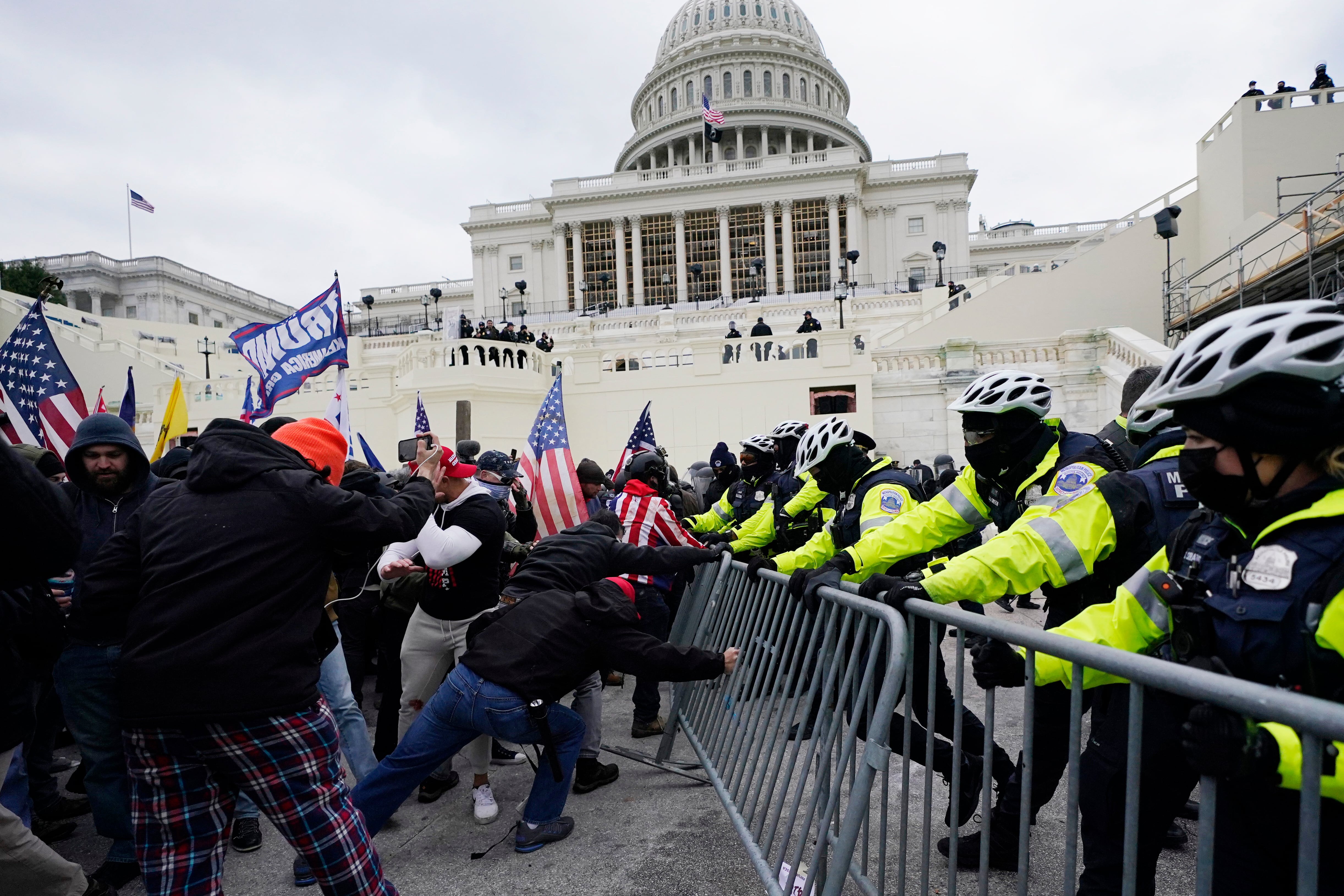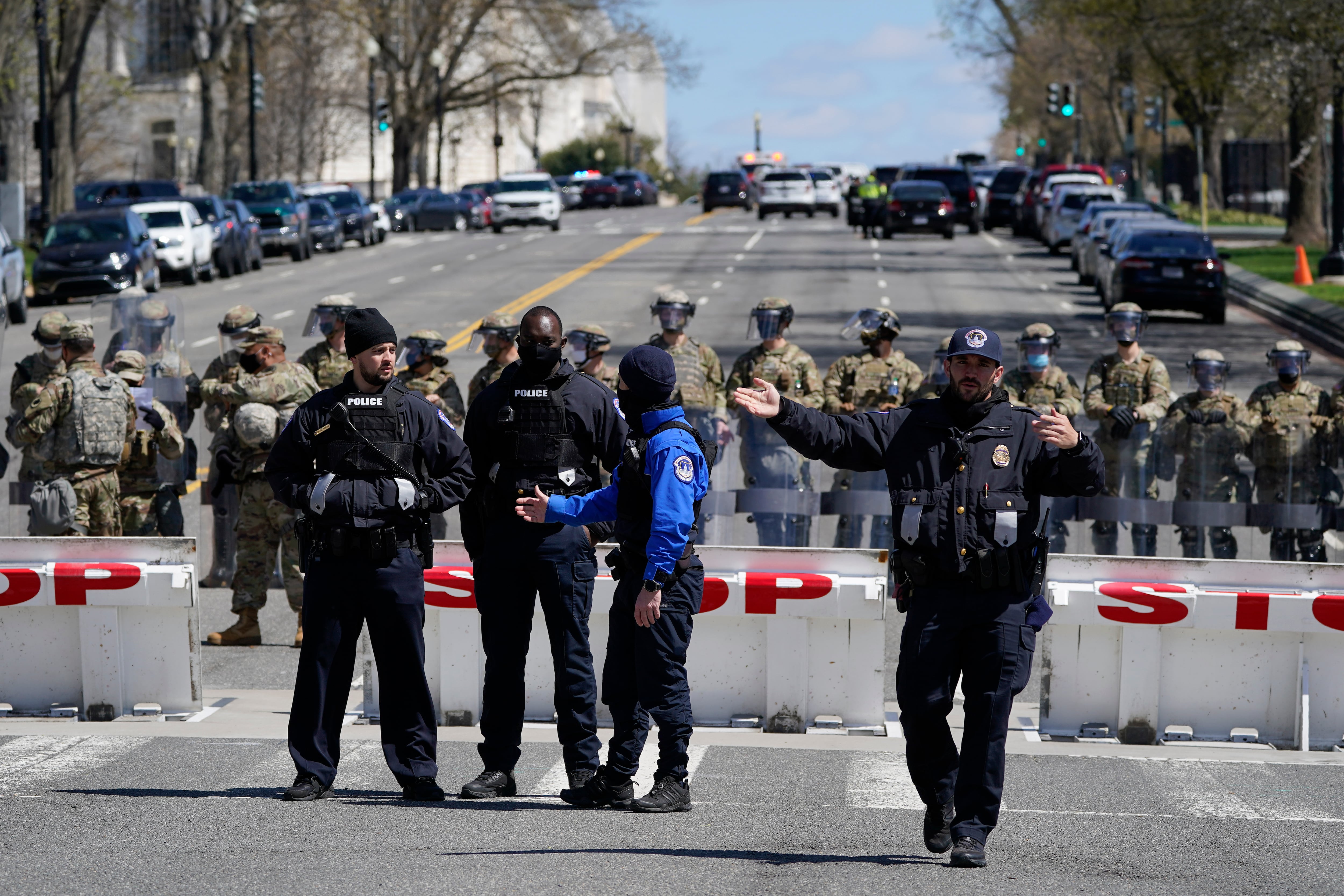The Washington, D.C. National Guard deployed an immediate reaction force of troops at Capitol Hill Friday afternoon following an attack on police officers there earlier in the day that resulted in the death of one officer and the suspect.
A man in a blue sedan rammed his vehicle into a barricade outside of the Capitol just after 1 p.m., injuring two Capitol Police officers. The man “exited the vehicle with a knife and ran toward our officers,” Capitol Police said in a tweet. At least one officer shot the driver, who was later succumbed to his injuries after being taken to a hospital, Capitol Police said.
Capitol Police officer William “Billy” Evans died as a result of his injuries, according to Capitol Police. Evans had a member of the Capitol Police for 18 years, according to acting USCP Chief Yogananda Pittman. He began his USCP service on March 7, 2003, and was a member of the Capitol Division’s First Responder’s Unit.
A second officer, who was not identified, was transported to a hospital, Capitol Police said.
The suspect has not been identified.
The incident comes nearly three months after hundreds of rioters stormed the Capitol complex in an attempt to prevent Congress from certifying the results of November’s presidential election. Five people died as a result of the violence, including Capitol Hill police officer Brian Sicknick.
RELATED

In response to that attack, thousands of Guardsmen were deployed to Washington, D.C. to provide security for President Joe Biden’s inauguration and the weeks following. The current Guard mission is set to expire in May.
About 2,300 National Guard members are currently deployed to the region on security missions.
In a statement Friday, Guard officials said they “deployed an Immediate Reaction Force composed of National Guard soldiers and airmen to the Capitol complex this afternoon to support the U.S. Capitol Police. No National Guard members were injured in the incident at the Capitol.”
That force was “already stationed at the Capitol as part of the Capitol Police’s quick reaction force,” 1st Lt. Deborah D. Ouyang, a Guard spokeswoman, told Military Times.
No further details were given.
Last month, a task force charged with reviewing Capitol Hill security in the wake of the deadly Jan. 6 attack suggested creating a permanent military police battalion staffed by rotating Guard and reserve troops to help provide “quick reaction” support in case of future violence at the site.
The security review — led by retired Army Lt. Gen. Russel Honoré, best known for directing military relief efforts in the wake of Hurricane Katrina in 2005 — found numerous shortcomings in the Capitol complex’s security situation, including insufficient law enforcement personnel to adequately protect the several hundred acres under their watch.
Congressional leaders have not yet decided whether to follow through with establishing the semi-permanent quick-response Guard team.
The latest attack on the Capitol complex came during a congressional break, when most lawmakers and staff were back in their home districts. Security officials placed the building on lockdown shortly after the incident.
The barriers where the car crashed have been a permanent fixture on Capitol Hill for years, unlike security fencing that was installed following the Jan. 6 attack.
Military Times managing editor Howard Altman contributed to this report.
Leo covers Congress, Veterans Affairs and the White House for Military Times. He has covered Washington, D.C. since 2004, focusing on military personnel and veterans policies. His work has earned numerous honors, including a 2009 Polk award, a 2010 National Headliner Award, the IAVA Leadership in Journalism award and the VFW News Media award.




